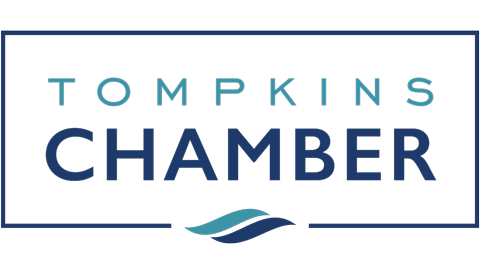A few months back, I penned my monthly message with the topic of the local and state minimum wage proposals weighing heavily on my mind. After a dozen years of Chamber and economic development work, owning two businesses and working for several and analyzing cash flow projections, financial statements and balance sheets before making loan recommendations, I’ve come to understand a little bit about how small businesses operate. And I am worried.
Many that I’ve spoken with have concerns about how actual revenues could increase at myriad businesses and non-profits to compensate for the net increase, per employee, that proposals of 67% wage increases over five years would require. The issue is not just $9/hour minimum wage jobs. We asked our members and the vast majority of respondents—58%—told us starting wages range between $10-15 per hour. 21% of respondents indicated their current starting wages were over $15 per hour. 58% of respondents did not support the NYS proposal to increase the state minimum wage to $15 per hour. About 27% did support the proposal, and 16% weren’t sure.
This very complex issue is a divisive one because it pits employers against employees. The public discourse on this issue frequently implies that evil corporate profiteers are holding the rest of us back.
The truth is far more complex. As you’ve likely seen in recent news articles, the Franziska Racker Center, a large state funded agency, has calculated the gap in annual revenue to fund the proposed wage increases to be $4 million. Their question to the state: will you provide this additional funding? Will the taxpayers?
Here’s what other survey respondents said it might cost them annually to deal with wage increases and compression, as well as other unintended consequences:
“A $500,000 increase in our budget.”
“We will close our store if minimum wage goes to $15 per hour.”
“I will have to increase wages to $20 per hour, which is $570K per year…I’m out of business.”
“We would not hire the young and inexperienced, and use more technology or outside vendors rather than hire.”
There are many important quotes above, and I have many more like them. The key themes that we must most heavily consider are these:
- How will businesses increase sales by tens or hundreds of thousands, without hiring new employees to generate those sales—or asking existing employees to take on more work?
- How will municipal governments and school districts raise the revenue needed to support the increases and the related costs, particularly in a 2% tax cap environment?
- Will employers be able to invest in on-the-job training and skills development for entry-level employees?
- What benefits or perks will employers need to eliminate to make room for rapid wage growth?
The economics predict that prices will have to increase for nearly everything we buy; jobs will be lost; hours will be cut; and that agencies, non-profits, and taxpayer funded entities will be making very difficult decisions. The very small and locally owned businesses that wage increase advocates most want to support are the same entities who will struggle to navigate this new New York. This decision will have far reaching impacts and unfortunately, will be viewed as one more reason why New York State is a difficult place to do business. Minimum wage policy should be set at the Federal level; if every state is on a level playing field, at the very least, New York can become more competitive on the wage front.
March 2016


